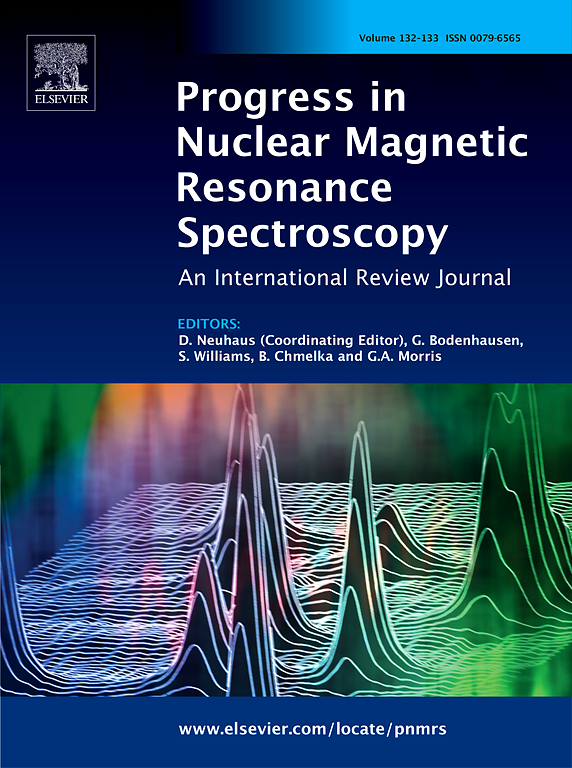食品代谢组学的进展:验证基于核磁共振的非靶向方法和促进核磁共振协同应用
IF 8.2
2区 化学
Q2 CHEMISTRY, PHYSICAL
Progress in Nuclear Magnetic Resonance Spectroscopy
Pub Date : 2025-04-17
DOI:10.1016/j.pnmrs.2025.101562
引用次数: 0
摘要
食品代谢组学已经成为表征复杂食品系统的有力工具,为检测真实性、评估质量和确保一系列食品基质的安全性提供了一种非靶向的高度判别方法。通过捕获样品的完整光谱特征并将其减少到可管理的变量,该技术提供了广泛的代谢物快照,包括从次要化合物到主要成分的所有内容。一个关键的优势在于核磁共振光谱的可重复性和稳健性,允许在不同的仪器和实验室之间进行光谱比较。这种可比性促进了协作努力,并促进了大型社区构建数据集的建立,这对于推进可靠的分类模型和实现非目标协议的大规模部署至关重要。从选择具有代表性的真实样本到优化采集参数、数据处理和分类算法,每一步都要严谨,这对于获得一致、高质量的代谢组学数据至关重要。随着验证和标准化实践越来越被广泛接受,基于核磁共振的非靶向方法将加速食品监测和标签的创新,减少分析的不确定性,并解决食品欺诈检测中的新挑战。最终,通过结合一流的协议、协作网络和开放访问数据存储库,非靶向NMR代谢组学有可能彻底改变可追溯性,并培养全球消费者对食品供应链真实性和质量的信心。本文章由计算机程序翻译,如有差异,请以英文原文为准。

Advances in food metabolomics: Validating NMR-based non-targeted methods and fostering collaborative NMR applications
Food metabolomics has emerged as a powerful tool for characterizing complex food systems, offering a non-targeted highly discriminative approach for detecting authenticity, assessing quality, and ensuring safety across an array of food matrices. By capturing the complete spectral signature of a sample and reducing it to manageable variables, this technique provides an extensive metabolite snapshot that encompasses everything from minor compounds to major constituents.
A key advantage lies in the reproducibility and robustness of NMR spectroscopy, allowing the comparison of spectra even across different instruments and laboratories. Such comparability fosters collaborative efforts and facilitates the establishment of large, community-built datasets, which are critical for advancing reliable classification models and enabling wide-scale deployment of non-targeted protocols. Rigor in each step, ranging from selecting representative authentic samples to optimizing acquisition parameters, data processing, and classification algorithms, proves essential for achieving consistent, high-quality metabolomics data.
As validation and standardization practices become more widely accepted, NMR-based non-targeted approaches will accelerate innovations in food product monitoring and labeling, reduce analytical uncertainties, and address emerging challenges in food fraud detection. Ultimately, by combining best-in-class protocols, collaborative networks, and open-access data repositories, non-targeted NMR metabolomics has the potential to revolutionize traceability and foster global consumer confidence in the authenticity and quality of the food supply chain.
求助全文
通过发布文献求助,成功后即可免费获取论文全文。
去求助
来源期刊
CiteScore
14.30
自引率
8.20%
发文量
12
审稿时长
62 days
期刊介绍:
Progress in Nuclear Magnetic Resonance Spectroscopy publishes review papers describing research related to the theory and application of NMR spectroscopy. This technique is widely applied in chemistry, physics, biochemistry and materials science, and also in many areas of biology and medicine. The journal publishes review articles covering applications in all of these and in related subjects, as well as in-depth treatments of the fundamental theory of and instrumental developments in NMR spectroscopy.

 求助内容:
求助内容: 应助结果提醒方式:
应助结果提醒方式:


